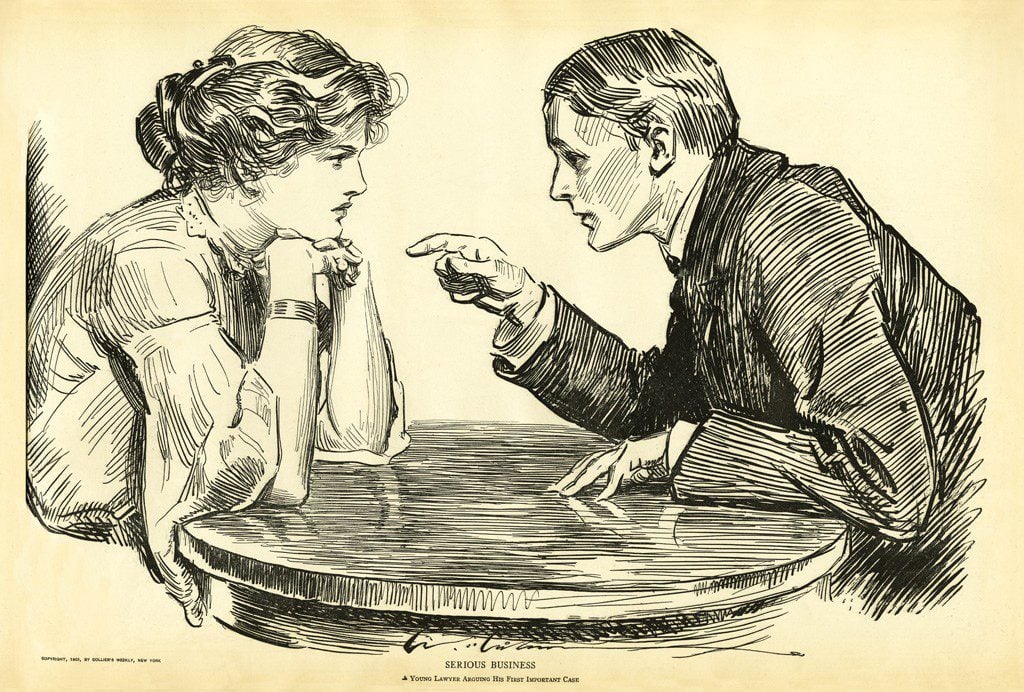![By Jeff Belmonte from Cuiabá, Brazil (Flickr) [CC BY 2.0 (http://creativecommons.org/licenses/by/2.0)], via Wikimedia Commons](https://wp-media.patheos.com/blogs/sites/533/2015/03/Wedding_rings.jpg)
It’s now something that’s been observed repeatedly: marriage is increasingly a middle/upper-class status. There are all manner of explanations for this: marriage is a poverty-avoiding tool, so unmarried people are more likely to be poor; poor people have lives which are chaotic enough that they can’t have the sort of healthy relationship that marriage requires; poor men are such screw-ups that women find the idea of marrying them no better than having another child to take care of; poor women would rather get benefits from the government than be married (but might be OK with cohabitating); etc.
Richard Reeves observes this in Dream Hoarders, and implies, though he doesn’t explicitly state this, that somehow it’s the “fault” of the upper-middle-class that the poor are much less likely to marry, and thus miss out on the economic benefits of marriage, while their own marriages are comparatively healthy, and provide for doubled-income and stability for their children.
Now, a new report (linked to by the Squared Away blog) by the Opportunity America – AEI – Brookings Working Class Group, “The Marriage Divide; How and Why Working-Class Families Are More Fragile Today,” provides some startling statistics. What I mostly want to do is share with you some of their charts, which in many ways speak for themselves.
First, the share of adults age 18 – 55 who are currently married, by class.
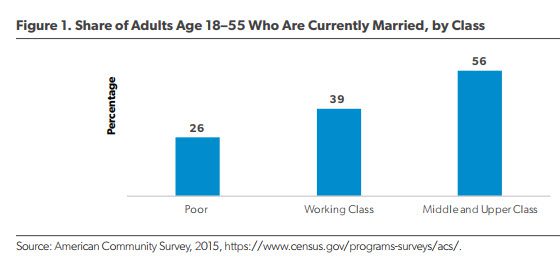
Second, because poor immigrants are more likely to be married than the native-born, a chart with only the latter.
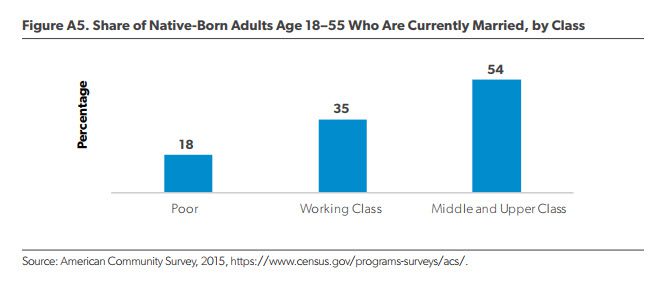
Third, to demonstrate that this isn’t a matter of “eh, it’s always been that way,” changes over time — though based on education levels as a rough proxy for income, and starting with an older age. Note that in 1970, all education levels’ marriage rates were essentially the same. I have to admit, though, that I”m not clear on why the marriage rates would be so much higher in this chart — yes, to be sure, it excludes the 18 – 24 year olds who are most likely to be unmarried, but that alone doesn’t seem like it would account for the difference.
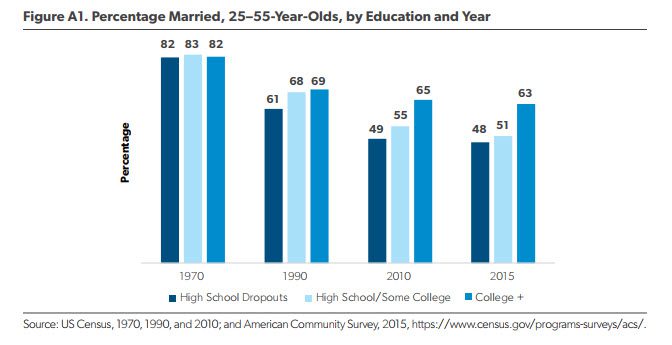
Fourth, fertility rates by class. The higher fertility for poor women can be explained by everything by insufficient access to contraception, to less interest in using it, to greater openness to children in general, but regardless of the reasons, it makes it clear that even just holding steady in terms of the percent of Americans in poverty is a challenge, given the greater natural population growth of the poor.
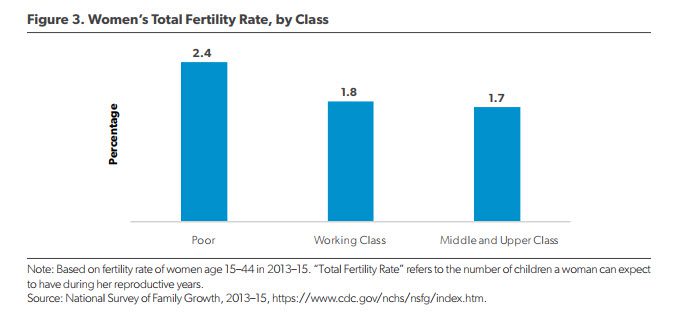
Now, the article offers various explanations for the marriage gap and proposes some solutions, but, quite honestly, it’s a short article. But here’s the concluding paragraph:
Finally, leaders need to pursue a strategy to extend norms around marriage and childbearing—which remain strong among the middle and upper class—to working-class and poor women and men. The alternative to taking steps like these is to accept a world where middle- and upper-class Americans benefit from strong, stable families while everyone else faces increasingly fragile families, and where high rates of economic inequality and child poverty are locked in by a marriage divide that puts working-class and poor Americans—and their children—at a stark disadvantage.
I’ve seen this expressed in various other articles as a call for the middle/upper middle class to “preach what they practice” — that is, given that they themselves understand how beneficial marriage is because they experience its benefits, to be willing to stick up for marriage rather than hem and haw so as to not be “judgmental.”
And to a large degree I think the benefit of this article is simply highlighting the fact that, however much we now take it as “normal” that the poor simply don’t get married, it hasn’t always been this way.
Top image: By Jeff Belmonte from Cuiabá, Brazil (Flickr) [CC BY 2.0 (http://creativecommons.org/licenses/by/2.0)], via Wikimedia Commons






